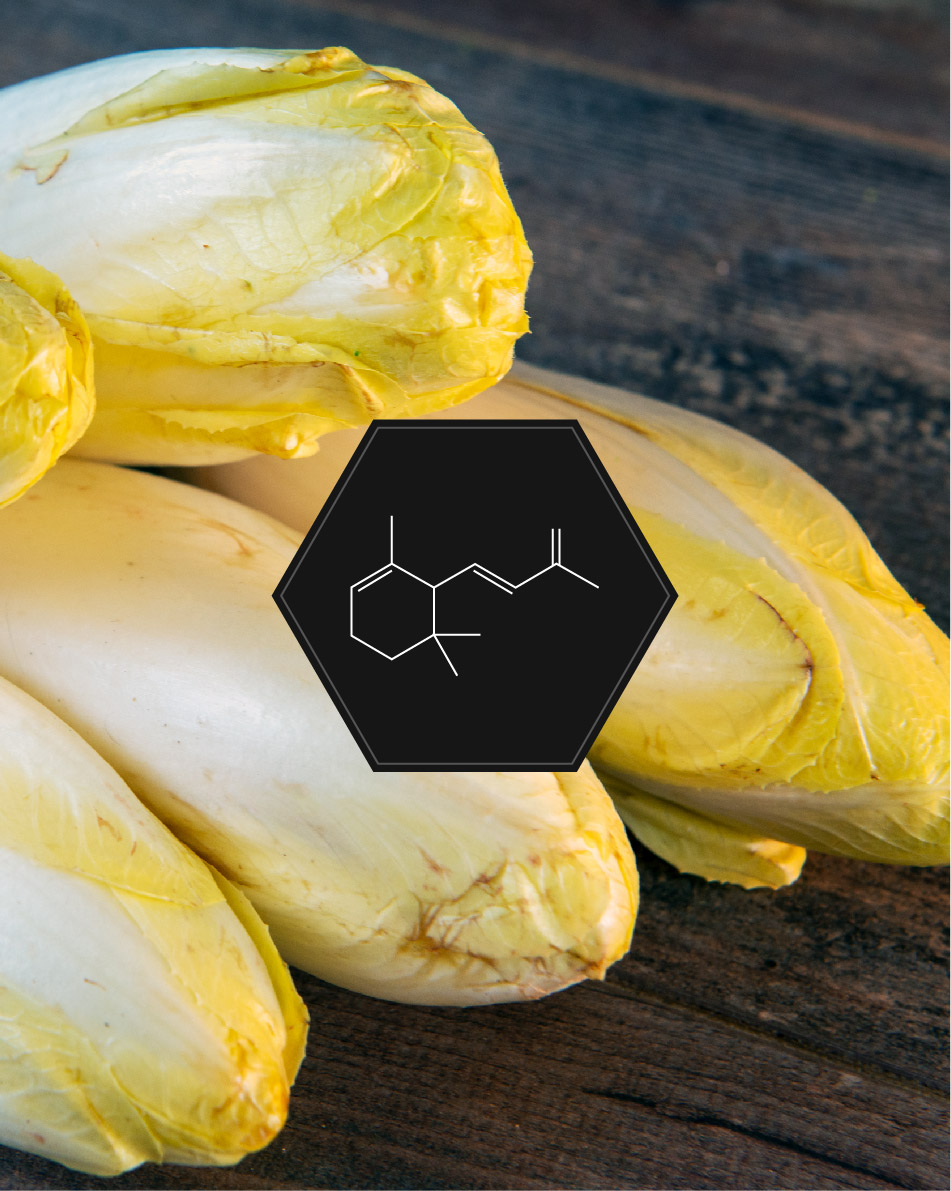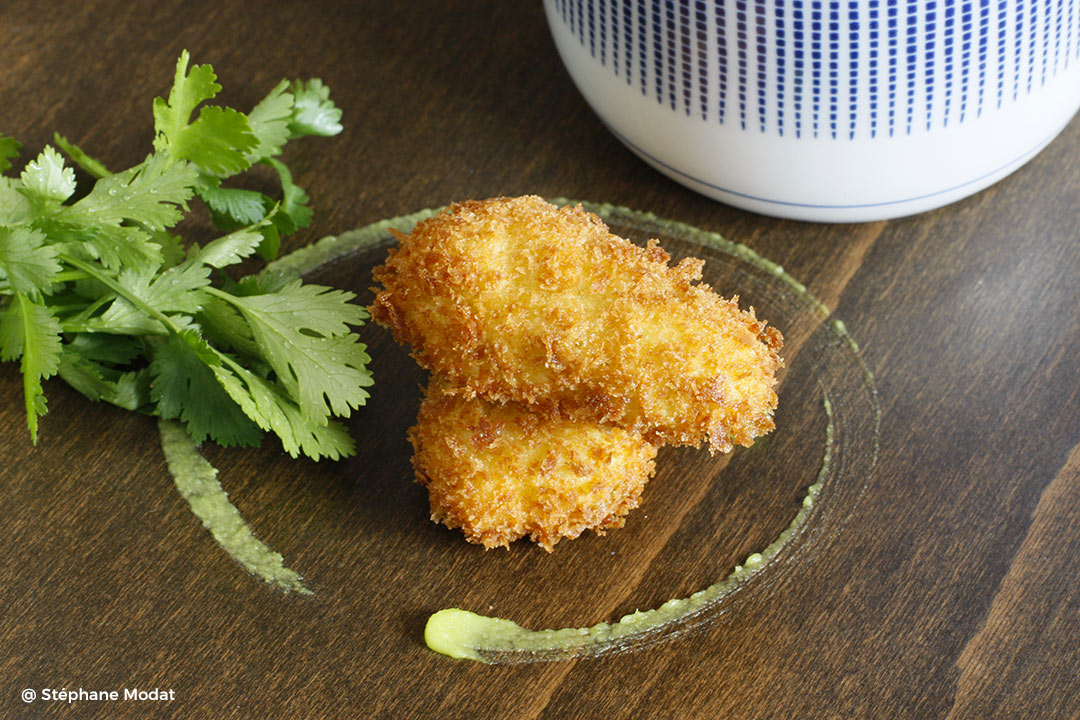BLOG
OF CHARTIER CREATEUR D’HARMONIES

DARK CHOCOLATE
Dark chocolate is strongly marked by aromas resulting from Maillard reactions (generated by cooking food). Its aromatic profile is very similar to that of barrel-aged wines, maple syrup, coffee and grilled/roasted foods. Aromatic compounds such as pyrazines (wet earth/vegetable aroma), furaneol, and other aromatic compounds are also added.

ALBARIÑO
The Albariño grape, a noble white grape variety from the Spanish appellation Rías Baixas, located on the west coast of Galicia, produces dry wines often marked by a strong minerality, close relatives of the terpenic aromatic profile of Alsatian and Germanic wines. This minerality also gives it a resemblance to some un-oaked Chablis (chardonnay) and Sancerre (Sauvignon blanc).
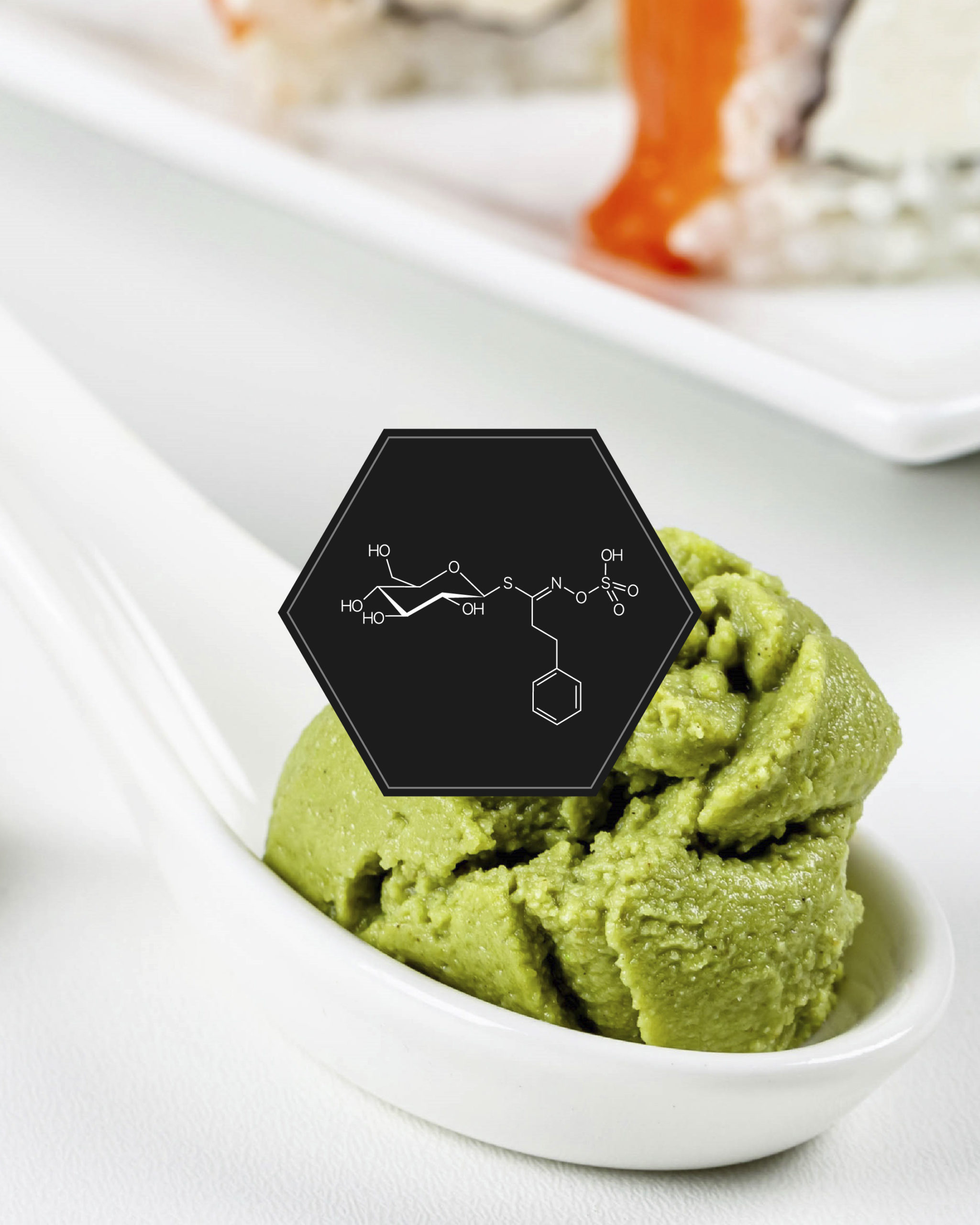
Wasabi
Like the capsaicin in hot peppers, wasabi has an active molecule (gluconasturtine) with a spicy taste that is also found in horseradish. It is this sulphurous molecule that gives the impression of fire in the mouth. When the wasabi root is crushed, an enzymatic reaction takes place, which gives it this typical taste. Once the fire is extinguished (very quickly), the wasabi produces a “cold taste”, like mint.

GREEN ASPARAGUS
Green asparagus has long been regarded as one of the enemies of wine. It is time to make amends! In its aromatic structure, when steamed, it contains aromatic compounds from the same family as Sauvignon blanc. And if grilled, sautéed or roasted, it develops aromas from the barrel-aged wine family, starting with Cabernet Sauvignon and Malbec.

BANANA
When overripe and darkened, it expresses itself through aromas of the same family as vanilla, honey, rum and coffee. On the other hand, when it is ripe, still yellow, it develops aromas reminiscent of cloves and parsnips. In fact, did you know that parsnips cooked with cloves develop banana aromas?

PARSNIP
Parsnips, like turnips and other root vegetables, are one of the foods with an aniseed flavour. This also makes it an ingredient that goes well with Sauvignon blanc and other aniseed-flavoured wines and liquids. But its aromatic path does not stop there, as parsnips also share a profile with bananas, which, when ripe and yellow, develop aromas reminiscent of cloves and parsnips.
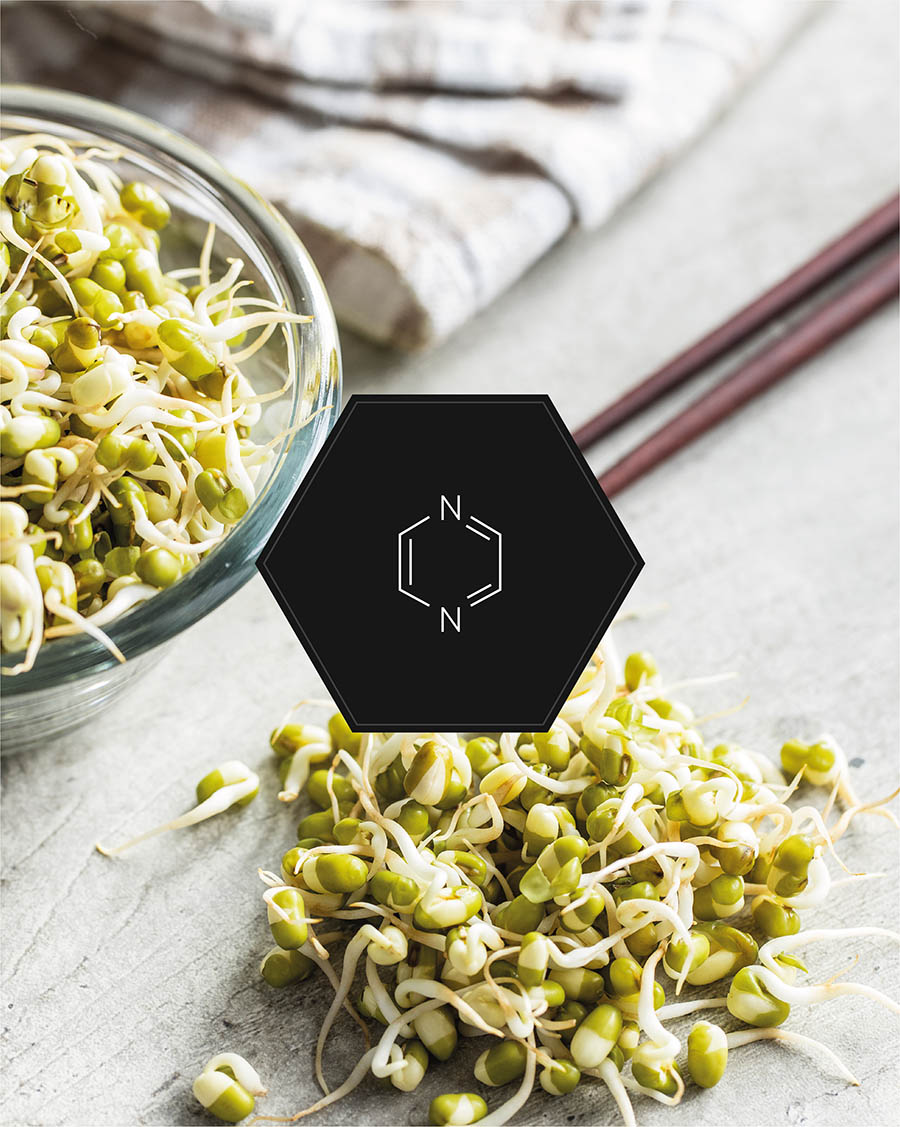
Soya (Sprouts)
Being dominated by aromatic compounds from the pyrazine world, sprouted soybeans are linked to the aromas found in shrimp, potatoes, peanuts and sesame oil, as well as in sherry wines, some champagnes and rosé wines.

OYSTER
In almost all oyster varieties from cold waters, such as Brittany and Normandy, in addition to their mineral, more or less iodised and fresh almond flavours, there is also a slightly vegetal, lettuce and seaweed flavour, in contrast to other varieties which are characterised by flavours reminiscent of cucumber and melon.
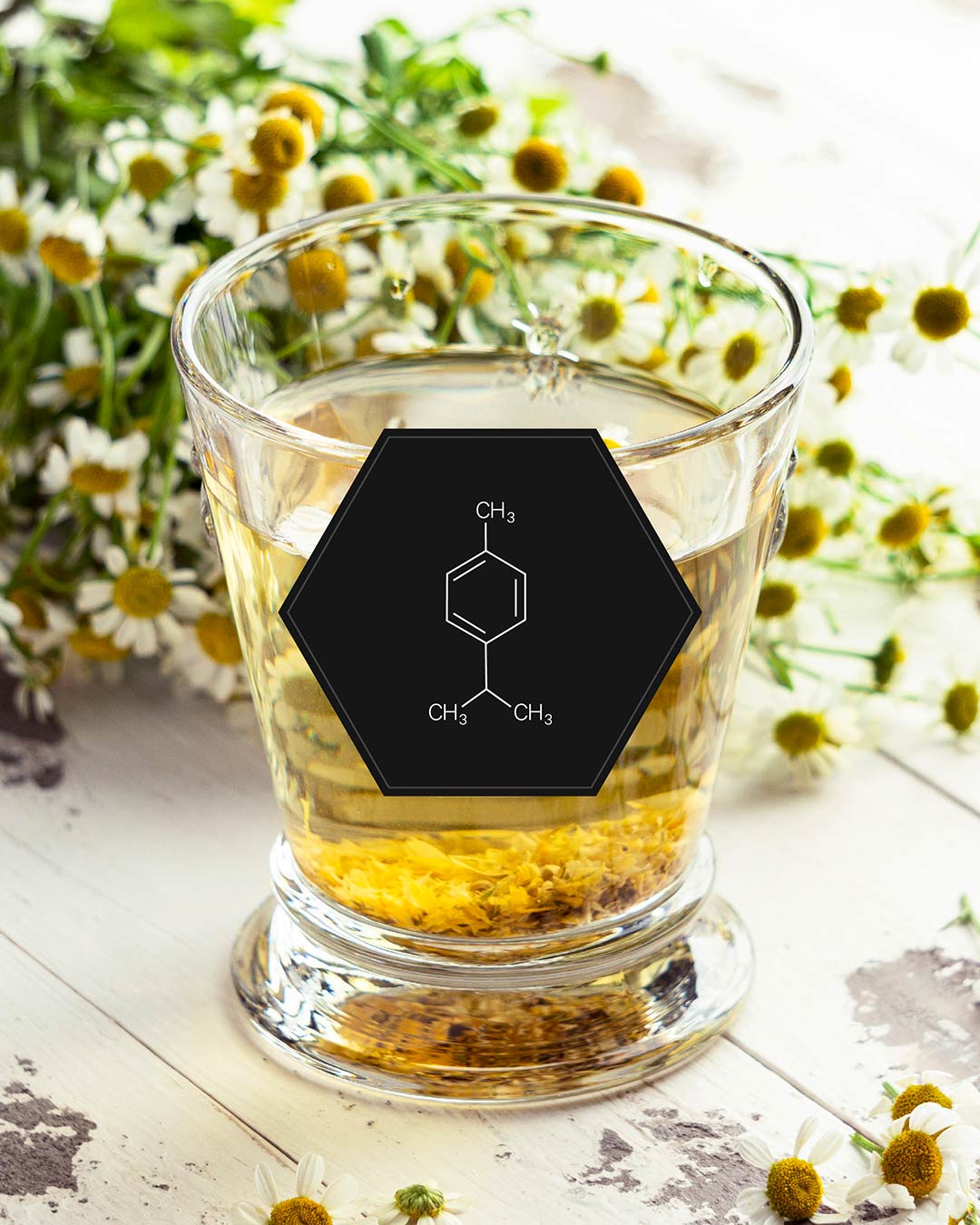
CHAMOMILE
Chamomile is a great ingredient in cooking, useful for poaching or flavouring fish and steamed vegetables. It is rich in coumarin, a potent aromatic compound that resembles dried hay and nuts, also dominant in tonka beans.

IBERIAN HAM
I have gathered here two families of cured hams. On the one hand, Spanish hams: Serrano and Iberian hams (pata negra), which develop aromas of fungi and terpenes due to the external mould produced during curing; and on the other hand, Italian hams: prosciutto and San Daniele – in addition to the French Bayonne ham – which are marked by fruitier compounds (esters, aldehydes and lactones).
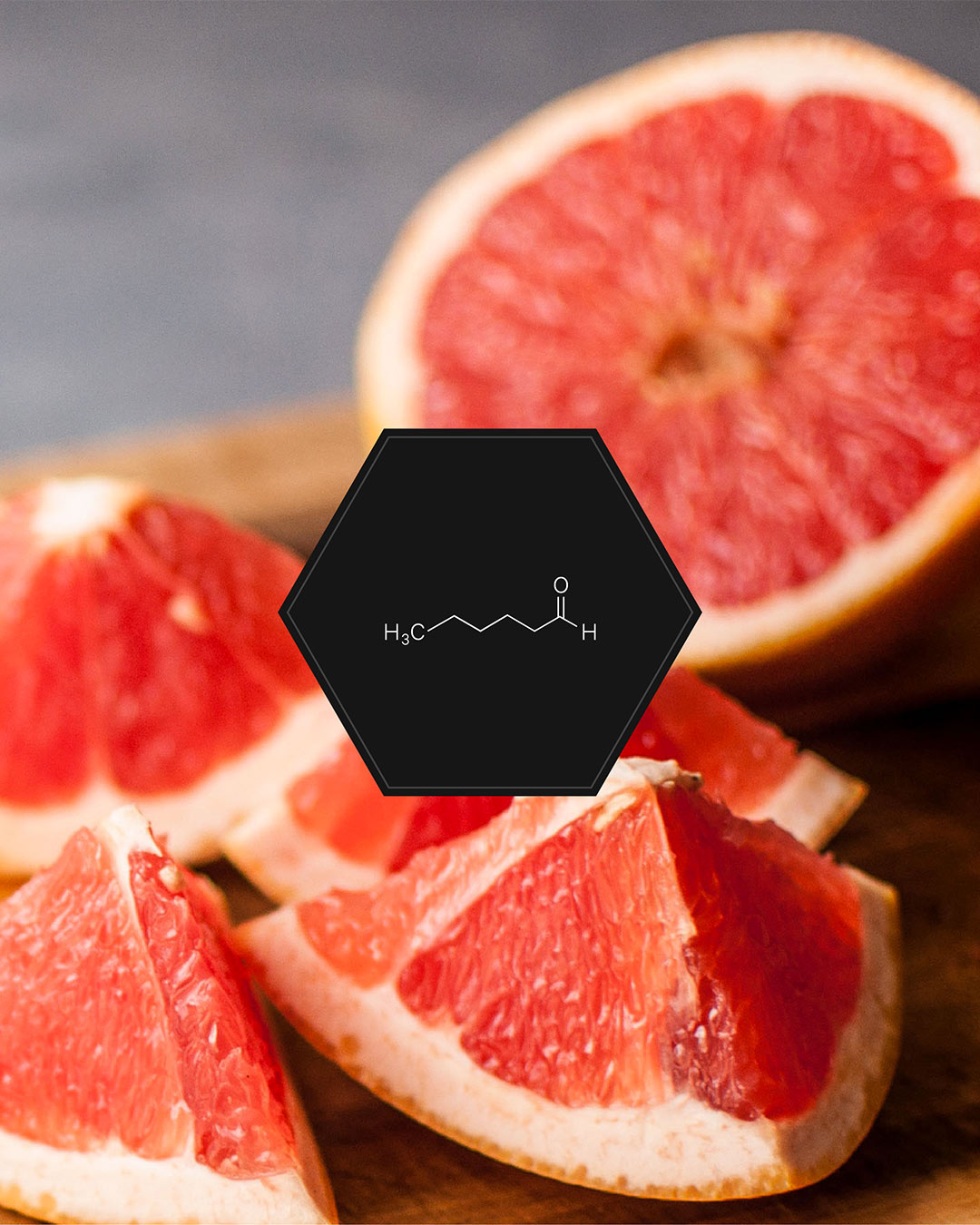
Grapefruit
Grapefruit, whether yellow, pink or even Southeast Asian, has a profile dominated by two major families of aromatic compounds (thiols & terpenes) found in some foods and beverages, making it a complementary ingredient. And remember: it goes great with wines and beers at the table.
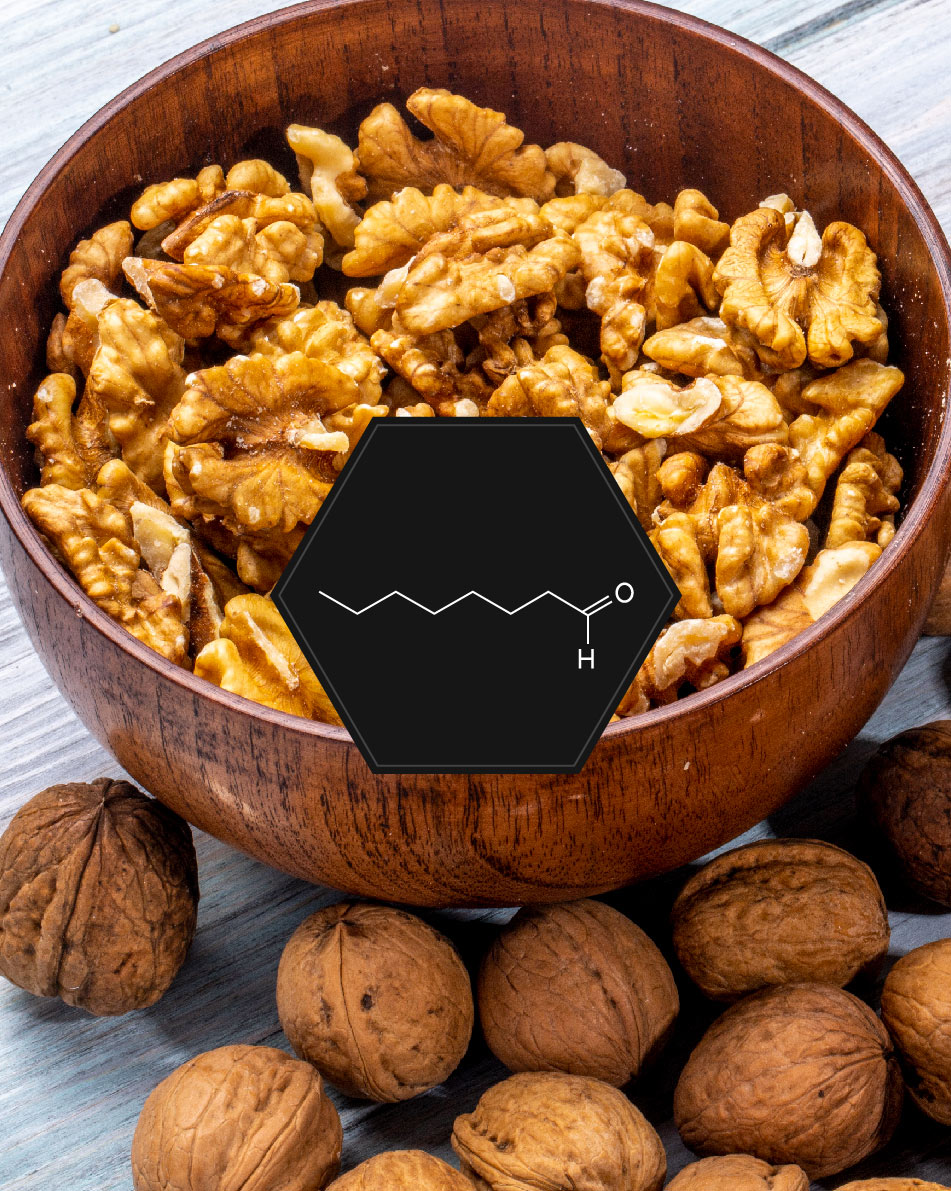
Grenoble walnut
A little basic chemistry to better understand the origins of a succulent trio. Caramel aromas (marked by an aldehyde, close to vanilla) have hooked atoms like those of Grenoble walnut and vanilla. This is why it is so well matched with its two dessert partners, but also with wines marked by these aromas, especially madeiras and ports, as well as very ripe rivesaltes and sauternes.
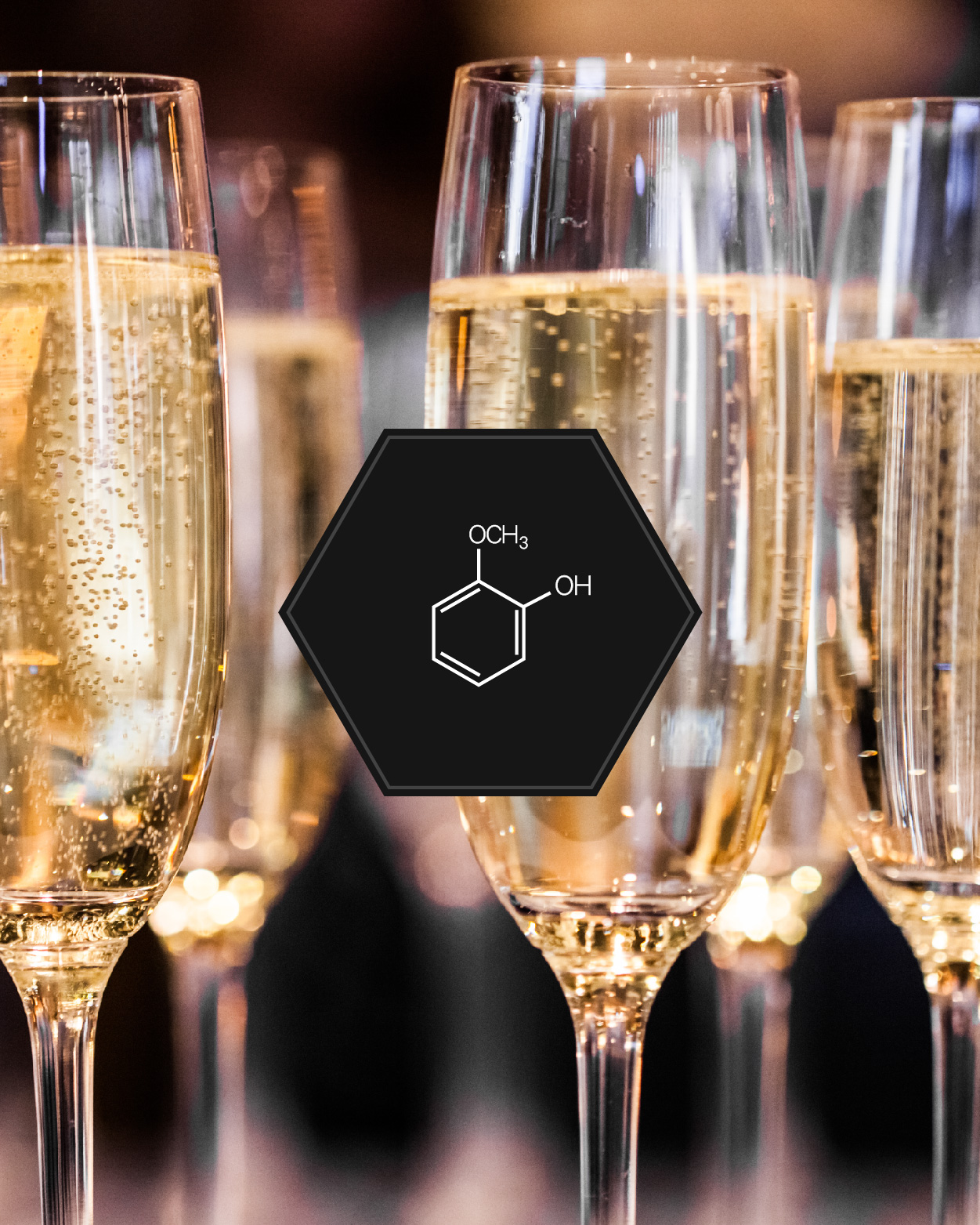
Cava = Versatility
As in the case of champagnes, the excellent white sparkling wines of the Cava appellation favour magnificent harmonious inspirations at the table. Their aromas of almond, pear and apple, with a hint of citrus, set the pace for food and drink pairings and cocktails.

ARTICHOKE: AN ALMOST SWEET COMPLEXITY
Once cooked, the artichoke is dominated by an aromatic compound (1 -hexen-3 -one-), which also contributes to the aromatic profile of raspberry, honey, lime, butter and cooked milk. In fact, artichoke is marked by more than 48 organic compounds, including coumarin, with the tonka bean odour, as well as some furans, phenols and other aldehydes.
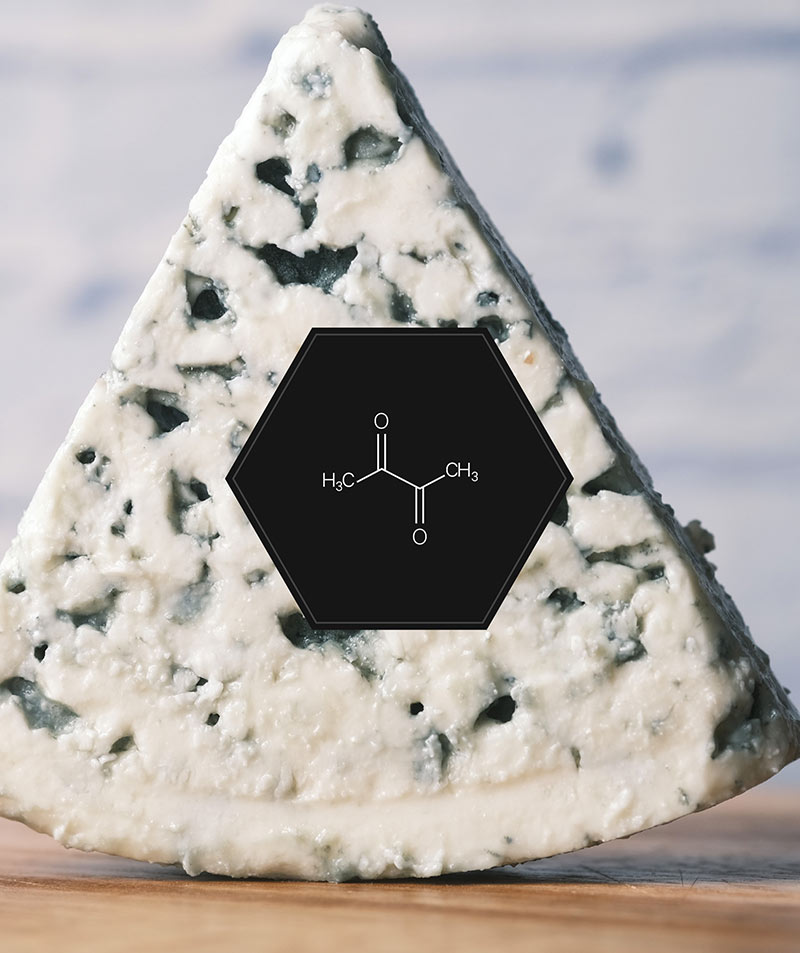
BLUE CHEESE: COMPLEXITY AT ITS BEST
The volatile compounds in blue cheese reveal aromas of butter, spice, spiciness, fruit, meat, flowers, coffee and cocoa. There are also fatty acids, such as glutamate (part of the fifth taste: umami), that support the whole, providing a richness of flavour and expressiveness in the mouth.

LAUREL: A WINE LEAF
Laurel is marked, above all, by aromas of the terpene family, the same ones that characterize the aromatic profile of rosemary and eucalyptus, as well as Riesling wines, Cabernet Sauvignon reds from Australia, California and Chile, and Chilean Carmenère reds. It is also rich in eugenol, the dominant aromatic compound in cloves. In addition, it can sometimes give off aromas of vanilla and nutmeg.

ROASTED RED PEPPER: HIGHLY WOODY
Like roasted sesame, roasted red pepper shares aromatic compounds (dimethyl pyrazines) with all roasted and grilled foods, as well as sharing aromas with wines and spirits aged in oak barrels. The synergy in this case is very strong, because in addition to the aromatic link between the roasted pepper and the toasted barrel, there is also an osmosis between the pyrazines in the oak and those in the raw or roasted red (and green) pepper.

Sweet Potato: Colorful
Aromatically related to the butternut squash, the sweet potato derives some of its aromatic organic compounds from its colour pigments (carotenoids), which are echoed in other foods such as saffron and chili pepper, as well as in rosé and chardonnay white wines.
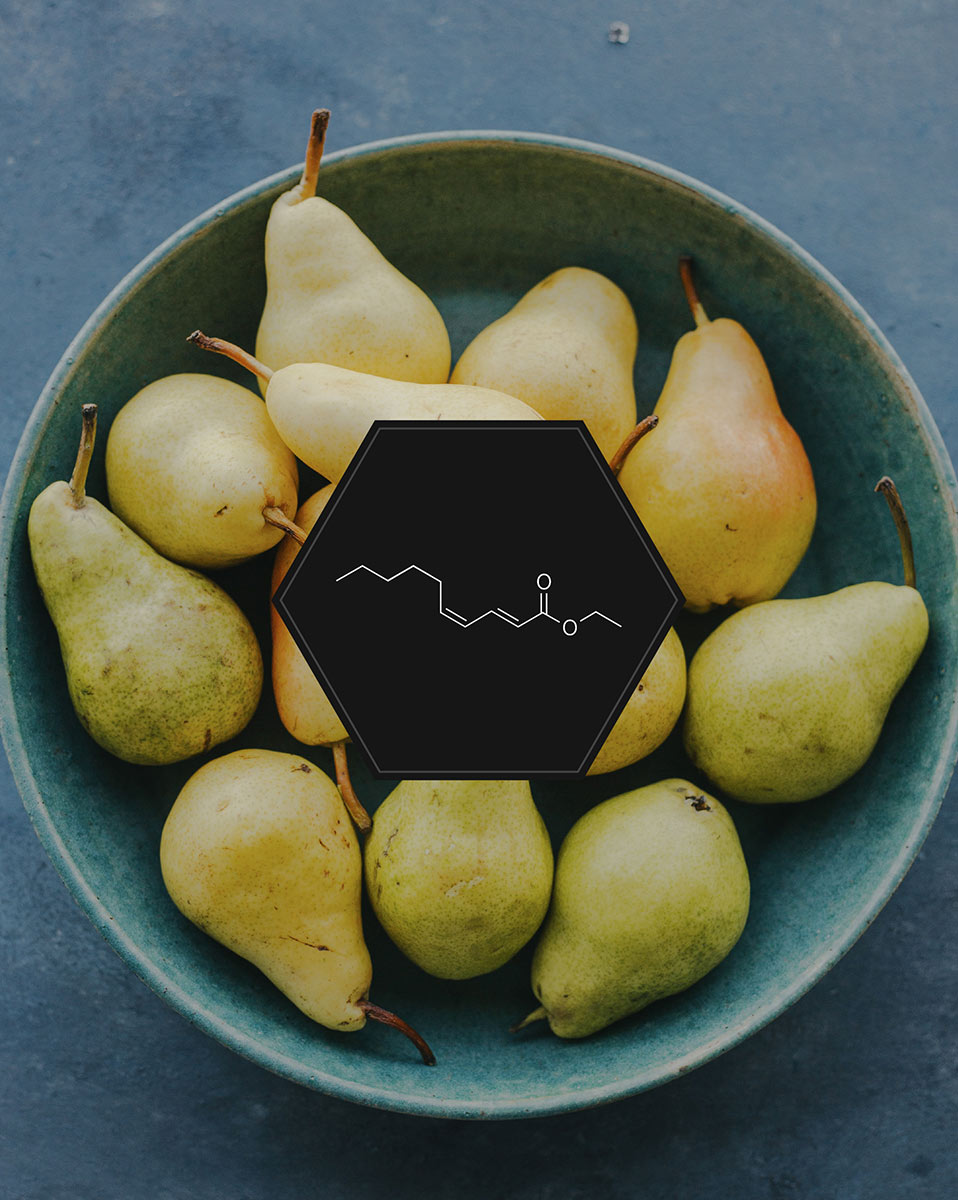
PEAR: Creative fruit
You can easily have fun in the kitchen by adding ingredients that share the same dominant volatile compounds, such as fresh fig, honey, cinnamon, thyme and liquorice, to your pear recipes. Many sweet white wines will also echo the pear in their similar aromatic structure, and Beaujolais Nouveau is a perfect match for the pear’s banana profile.
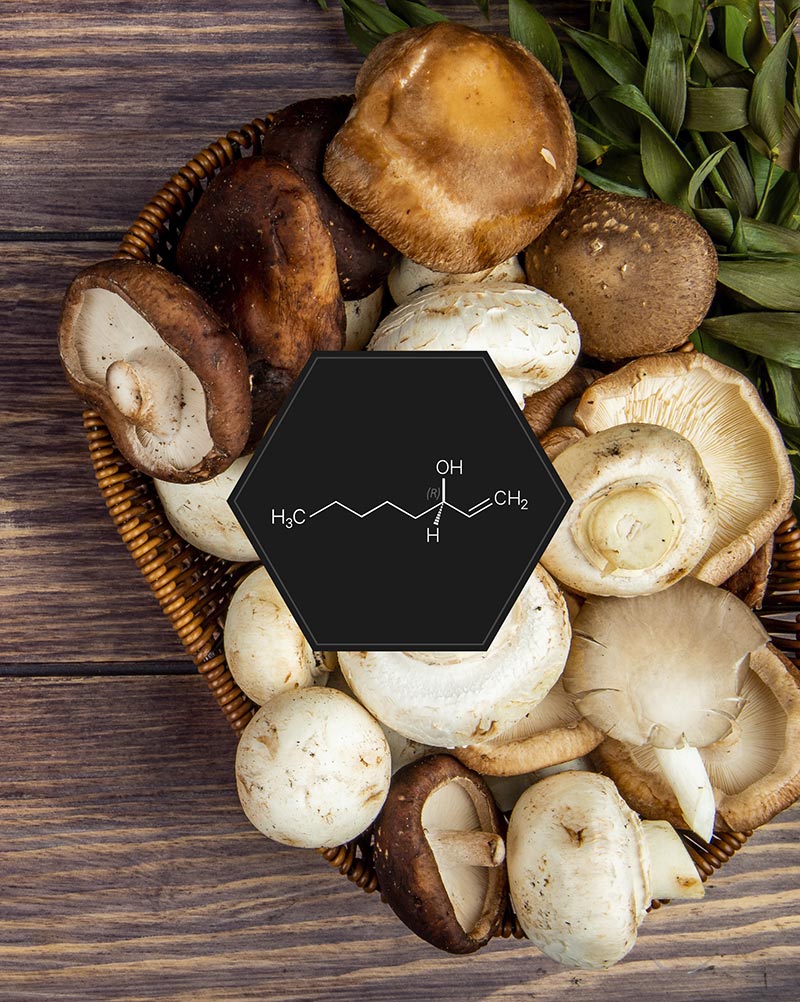
MUSHROOM: Coconuts, Lavender, …
The relationship between the coconut and the mushroom, like that between the hazelnut and the dried bonito, does not seem obvious, but they are made for each other. As a curiosity, the world’s leading producer of this mushroom is… China! Finally, it is worth noting that this mushroom has a close aromatic link with lavender.

HIBISCUS: FLOWER POWER
Mexicans are great consumers of hibiscus flowers. They make a refreshing water, called “agua de Jamaica”, with an infusion of dried flowers in boiling water and sugar, and filtered before putting it in the refrigerator. This floral or fruity water is ideal for making cocktails and desserts. A delicious hibiscus syrup (Wild Hibiscus Flower) is also commercialized.

PEAS: FOAM MAKER
The pea is to be glorified! To do so, just follow the trail of umami, which gives it volume and texture in the mouth. Some umami foods (spinach, dark beer, black liquorice, etc.) are also rich in saponin, a molecule with a very stable emulsifying power that allows them to form foams.
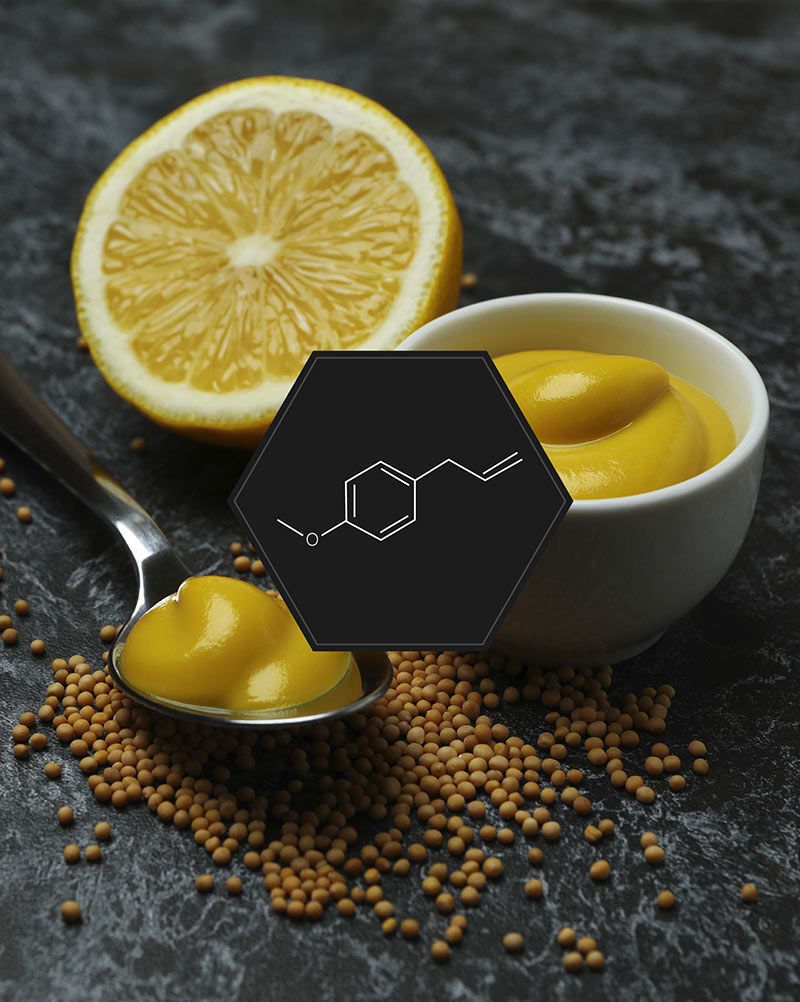
MUSTARD: Dr JEKYLL & Mr HYDE
Mustard shares two of its main aromatic compounds with wasabi and horseradish, but it is also dominated by Estragol, an aromatic compound with a “cold taste”, which also marks the profile of tarragon and green apple. When roasted, mustard seeds lose their pungent flavor and become milder, with a nutty flavor and mild bitterness. Mustard is also used in the composition of vadouvan, a blend of Indian spices with cumin, fenugreek, turmeric, pepper, onion, shallot and garlic.

BEETROOT : EARTHY POWER
The aromatic identity of beet comes from traces of eugenol, which has a clove-like odor, geosmin, which has a damp earthy odor (see “Petrichor” ), and pyrazines, which have a vegetal/grassy aroma. The latter are also found in the profile of Cabernet sauvignon and sauvignon blanc wines. That earthy, slightly bitter touch of red beet also goes hand in hand with red wines with marked tannins.

BASMATI RICE: MORE THAN A RICE
The fragrant basmati rice accumulate a high percentage of aromatic compounds (twelve times more than conventional white rice). It release powerful toasted aromas of popcorn, toasted nuts, and bread crust, as well as floral aromas, thanks to the presence of linalool, a terpene compound with a very floral (lily-of-the-valley, lavender), but also fruity and spicy smell.

DUCK: An aromatic fat
Thanks to its diet and the way it is cooked, duck develops natural aromas that move in the sphere of flowers, wood, grill and vegetables. In fact, its fat is a great “carrier of aromas”. There are many ways to achieve aromatic harmony both in the dish itself and between the dish and the glass.

LEEK: FROM CHEESE TO CHOCOLATE
Leek is distinguished by one of its dominant aromatic compounds, diacetyl, which links it to ingredients containing the same compound, such as cheese, chocolate, lavender and certain wines, including fino and white wines from warm countries aged on lees, as well as tea and Scotch whisky. So there are many ways to have fun in the kitchen by transforming recipes with leeks.

MANGO: AROMATIC COMPLEXITY
Due to its complex aromas (woody, caramelised, fruity, sulphurous, and terpenic), mango creates strong aromatic synergies with a wide range of ingredients, ranging from green and pink pepper to pink grapefruit, potent gin, highly perfumed sage, and surprising cannabis.
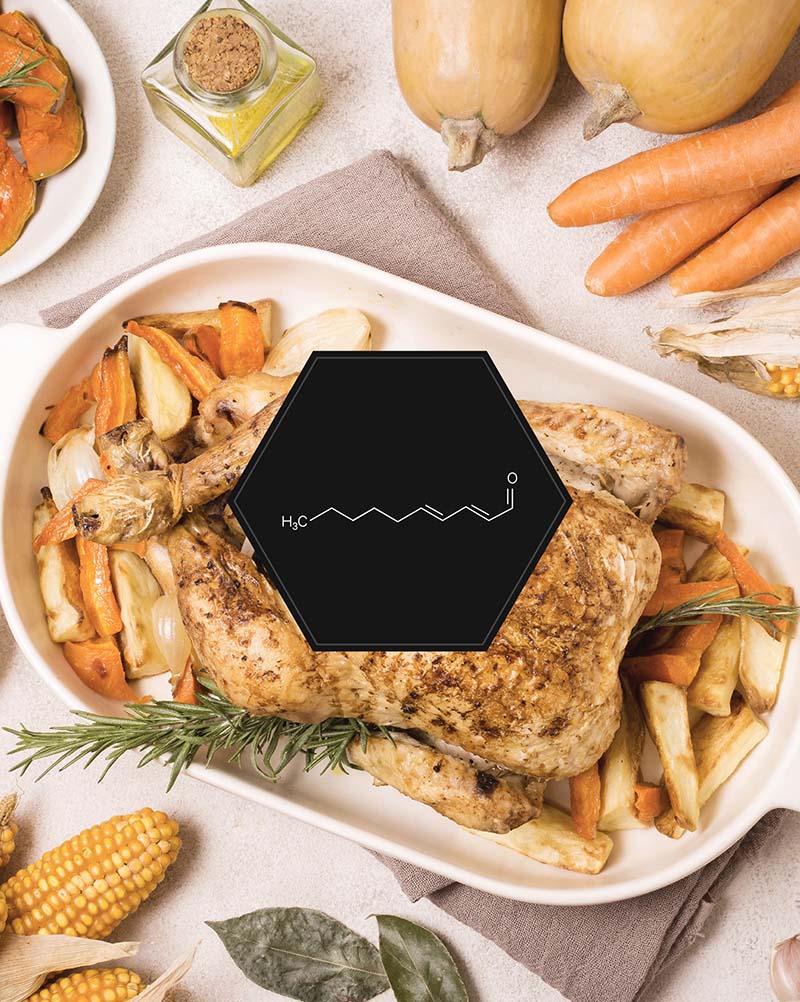
ROASTED CHICKEN: A roasted world
Its roasted, and therefore grilled and roasted aromas, share dominant aromatic compounds with both grilled foods subjected to roasting, as well as coffee and dark chocolate. Roast chicken is also found in the same aromatic world as wines and spirits aged in oak barrels.

FRESH FIG: A very floral fruit
Fresh figs are particularly marked by the aromatic fingerprint of linalool, a molecule with floral (lavender/lily) and fruity (citrus) aromas/scents.

GRILLED MEAT: MAILLARD FROM BARREL TO GRILL
Whether it’s meat, fish or vegetables, green coffee, cocoa beans, maple water or oak barrels, the combustion of these ingredients generates a multitude of new aromatic compounds. For example, the aroma molecules in oak-aged wines and spirits are the same as those in foods cooked on the grill or roasted in the oven.

Mussels: the tree of the sea
The mussel lends itself to a thousand recipes, it is well known, and it loves French fries – and so do the Belgians (!). But there are several other possibilities with the ingredients below, not to mention the fact that, when it is a bit iodized, this flavour can be magnified by cooking it with foods rich in pinene, which has the power to sublimate iodine. This is the case with saffron, thyme and young cedar shoots reduced to powder.

TOMATO: Like a flower
Only about fifteen of the 400 or so aromatic organic compounds that make up the hundred or so varieties of tomatoes are actually perceived by humans. Moreover, its aromatic structure with green and vegetal notes gives the tomato a profile similar to that of sauvignon blanc wine. But if you reinforce its floral note (which it also contains) by cooking it with rose or violet water, raspberries or lychees, all of which are ingredients rich in floral molecules, then you should serve a very floral white gewurztraminer wine.

SCIENTIFIC PROOF OF MOLECULAR HARMONIES BETWEEN IBERIAN HAM & JUNMAI SAKE
JUNMAI SAKE & IBERIAN HAM HAVE A LOT TO SHARE TO CREATE AROMATIC SYNERGY, AND TO CREATE NEW RECIPIES & INNOVATIVE MATCHING.
CHARTIER’S AROMATIC SCIENCE OF MOLECULARE HARMONIES SHOW THE PROOF THAT THEY BOOTH SHARE MANY DOMINANT AROMATIC MOLECULES.

IBERIAN HAMS: A range of flavours
The great family of Spanish hams, to which the Serrano and the Iberian belong, develop aromas of mushroom and terpene aromas due to the external molds produced during aging.

COCONUT: SWEET OR SALTY ?
Raw coconut, like its milk, is rich in lactones (a family of aromatic compounds). When roasted, it is marked by the world of pyrazines (compounds found in roasted foods and barrel-aged wines). During the Second World War, due to a shortage of serum, the wounded were put on a coconut water solution. This is because it has the same electrolyte as human blood. This led me from coconut to pig’s blood…. So to black pudding!

CUCUMBER: GIN LOVER
Saviez vous que le composé aromatique dominant du concombre est le même que celui que l’on retrouve dans le gin britannique Hendrick’s ? Il faut avoir essayé un martini au Hendrick’s et au concombre pour comprendre à quel point cette synergie est belle et prenante, ce qui est aussi le cas avec la tequila.

Dark beer: NOT ONLY HIGH IN ALCOHOL %
High-fermentation beers, which can be high in alcohol content, contain compounds that play a role in the same aroma world as oak-aged wines and barbecued foods. This is because maltol (a burnt sugar smell), an organic compound found in oak and some foods, including malted barley, is formed when the malt in beers is roasted and the inside of oak barrels are burnt.

SHRIMP: A TERRESTRIAL SYNERGY
Due to its color pigments, rich in carotenoids, shrimp enters into aromatic synergy with, among others, ingredients and liquids rich in aromatic compounds generated by the carotenoid precursors of aromas, and with those dominated by the pyrazine universe – which also sign its profile.

PEACH: THE FRIEND OF WOOD
Like the apricot, the peach’s aromatic profile is part of the large family of lactones, the aromatic compounds found in wines aged in oak barrels, particularly Roussanne wines, as well as in spirits that have been aged in wood, such as Scotch.

MOZZARELLA: CLASSIC AND VERSATILE
This classic Italian fresh cheese shares part of its flavour profile with cloves, opening the door to a lot of foods rich in the same dominant compound (eugenol), including mango, Thai basil, Roquefort and grilled or roasted asparagus, as well as wines and other beverages aged in oak or with a similar profile.
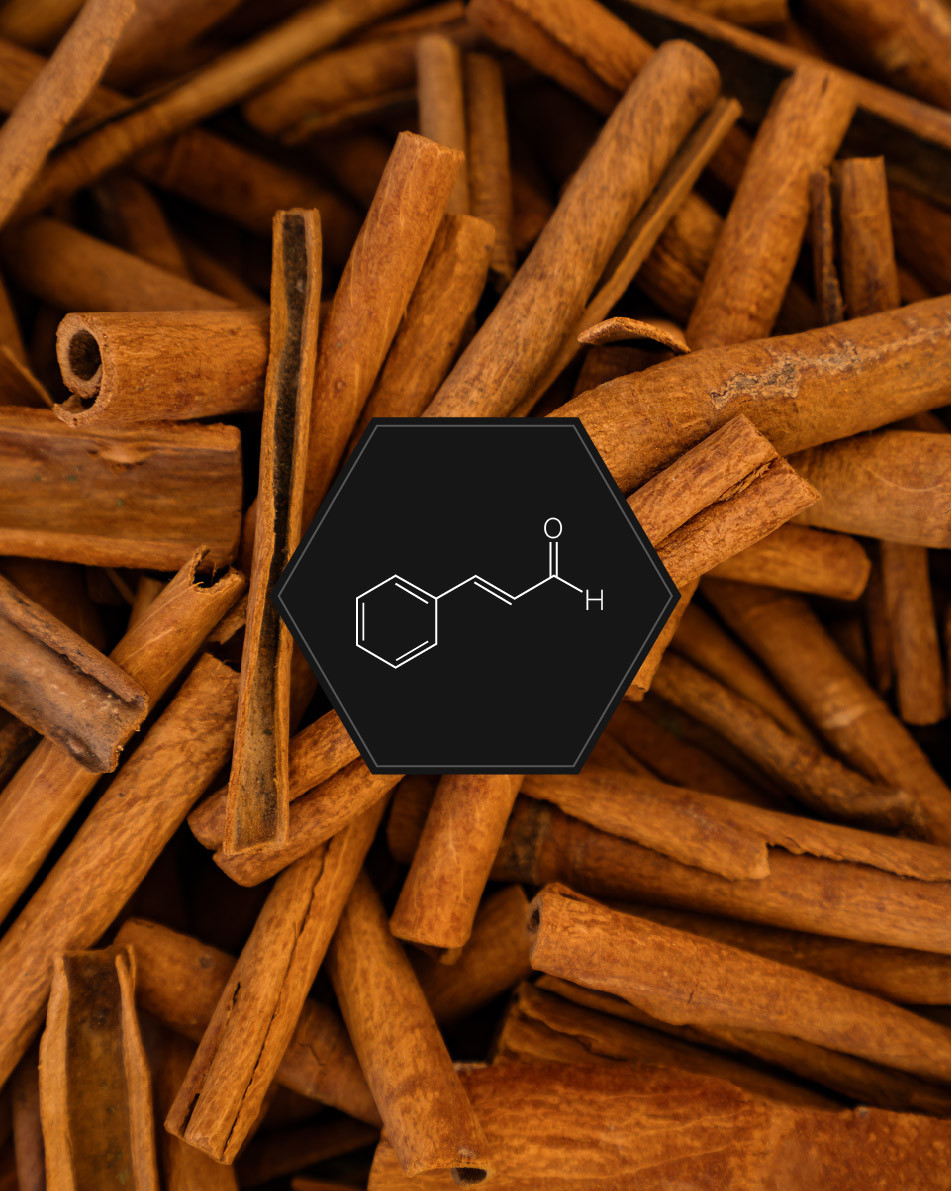
Cinnamon: The enhancer
Cinnamon, used sparingly, becomes a flavour enhancer, amplifying other flavours, just as sherry and umami do. Used “subtly” it will give presence to your dishes.

BLUEBERRIES: aromatic diversity!
Blueberries are amazing because their aromatic compounds open up numerous possibilities for aromatic harmonies.

Strawberry : a surprising twin
Surprising destinies than those of the “molecular twins” that are pineapple and strawberry!

Aged sake and sotolon recipe creation inspired by François Chartier’s molecular harmonies
By Yoshinobu Kimura, co-owner and head sommelier of Sushi M restaurant, Tokyo, Japan (formerly head sommelier for 10 years at Narisawa restaurant, 2 Michelin stars, # 1 restaurant in Japan, 2nd Best Restaurant in Asia and 9th Best in the world)

GIN: GIN or GINS?
Many brands of gin have a singular style, while having an identical aromatic base.
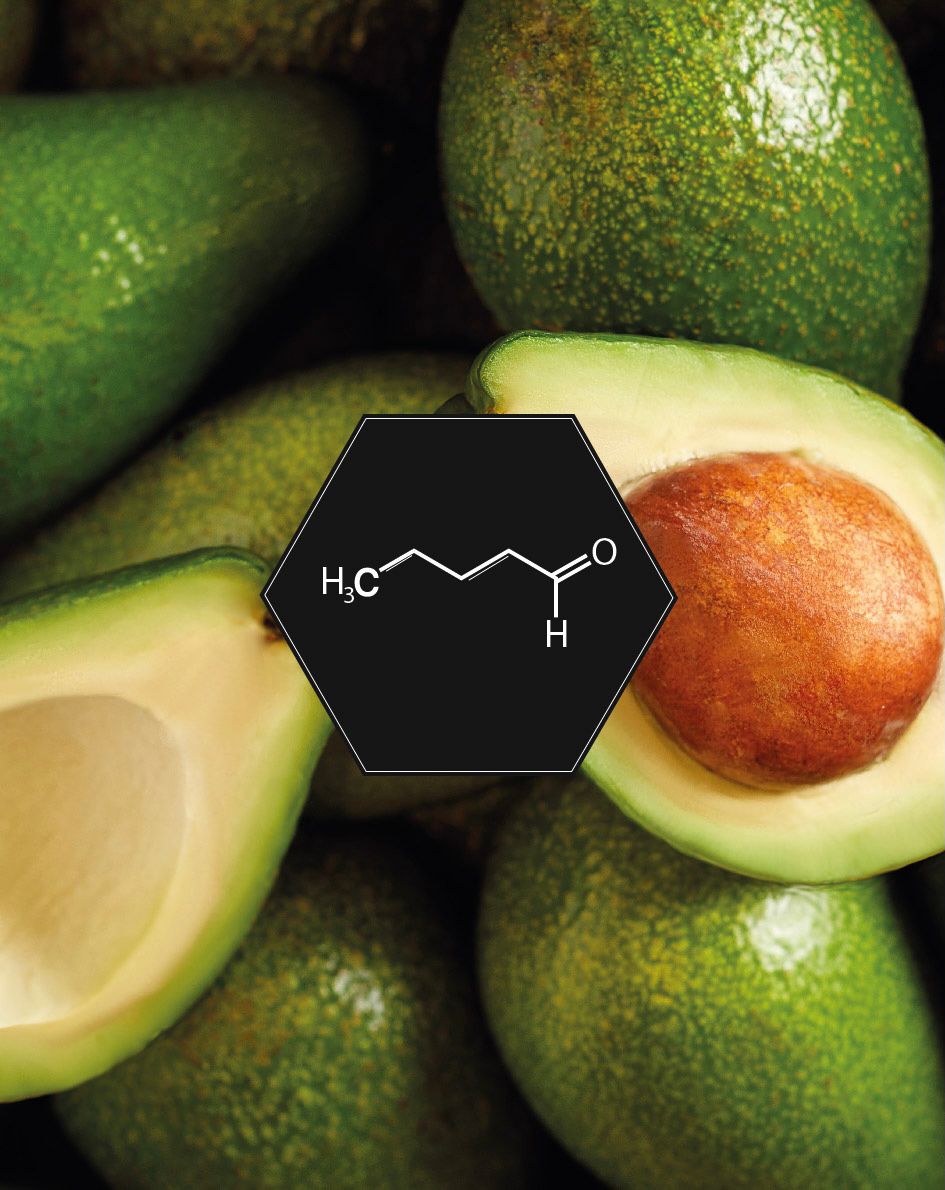
AVOCADO: A FRUIT WITH AN ANISEED HEART
In Mexican kitchens, it is classically associated with fresh coriander, and rightly so, as it is dominated, among other things, by aniseed aromatic compounds.

Applying aromatic science of molecular harmony for wine pairing
In a chapter of the book Tastebuds and Molecules, which explains the aromatic science created by François Chartier, there is a concrete example of molecular harmonies offered during a meal proposed by Chartier, oenologist Pascal Chatonnet and chef Stéphane Modat. After a tasting of a white Châteauneuf-du-Pape, Château Beaucastel 2006, notes of honey (phenylacetaldehyde) and apricot/peach (lactones) emerged as the dominant molecules (aromas).

Comparing Varietals: Spanish Monastrell VS Provencal Mourvedre
Spanish Monastrell and Provençal Mourvedre: a single grape varietal certainly, but more often than not, tastes at the opposite ends of the spectrum! We are “comparing varietals” to better understand the differences in taste between wines made from the same grape variety, depending on whether it comes from its native terroir or grown in a different climate.

CARROT: A DOUBLE-SIDED VEGETABLE
Did you know that raw carrots do not have the same aromatic profile as cooked carrots?
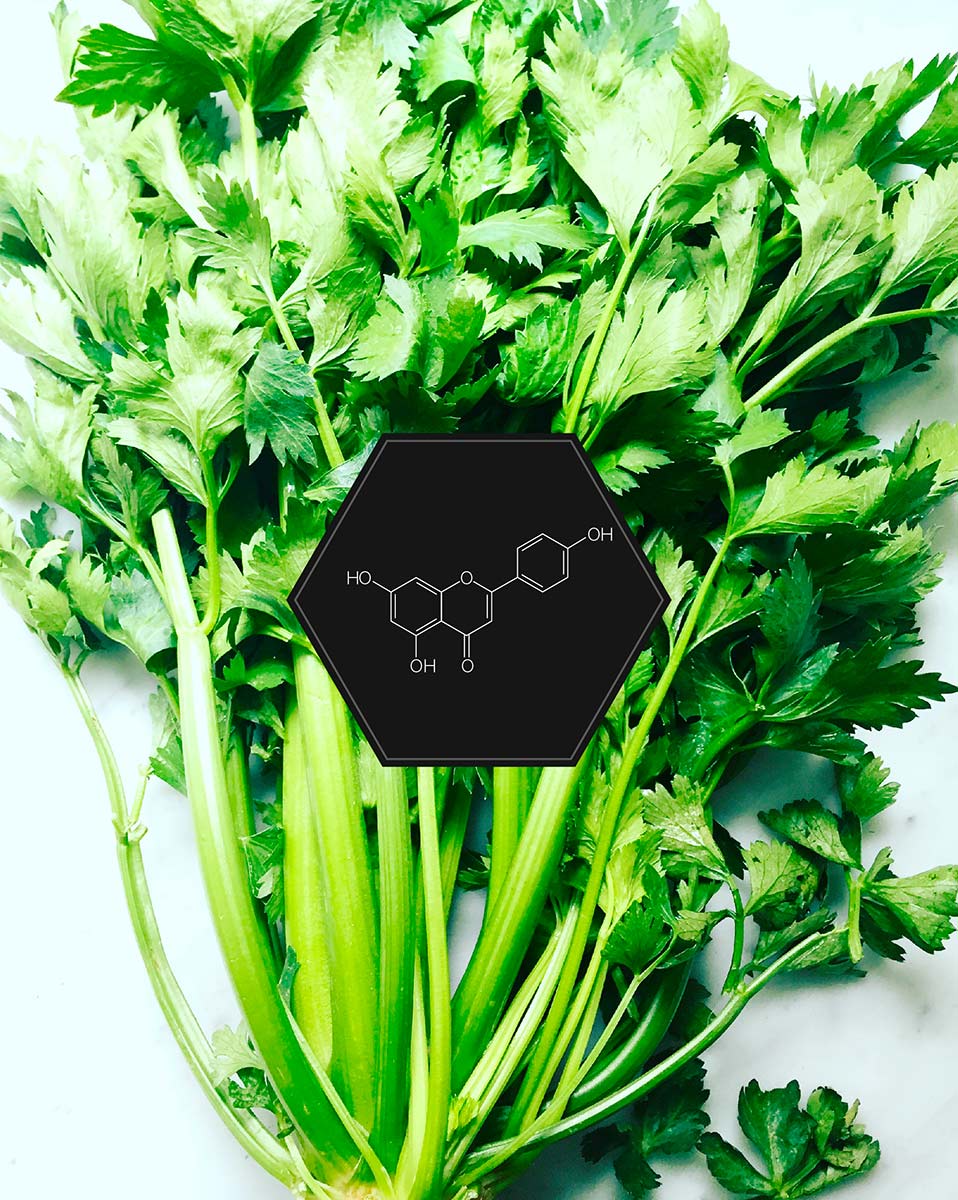
CELERY: A REFRESHING POWER
Among the 12 dominant aromatic compounds in celery is apigenin, a polyphenol, also dominant in parsley, which induces a “cold taste” on the taste buds, as do the menthol in mint and estragol in tarragon and green apple.

ALMOND: FRESH / TOASTED
Toasted or roasted, it develops new aromas that allow new aromatic harmonies with all foods in the world of toasted/roasted.

CABBAGE: A CLOSE FRIEND OF THE TRUFFLE
Some of the volatile sulphur compounds that sign the aromatic profile of the large cabbage family, including Brussels sprouts, are of the same type as those that define the aromatic DNA of the truffle. This explains the countless recipes where cabbages are married to truffles. Its volatile compounds, the thiols, also give the aromatic signature of sauvignon blanc, colombard and petit-manseng wines.

THE RED APPLE: FRESH AS A ROSE!
The red apple owes its color to anthocyanins. These same pigments, which give color to grapes and red wines, are the source of a plethora of aromas that sign the aromatic DNA of apples, including a floral tonality that binds the red apple to lychee and rosewater, as to gewürztraminer wines.

Rosemary: A Southerner with a northern terpene profile
In this chapter, you will discover the heart of my harmonic research, specifically on the trail of the sunny and woody aromas of rosemary and wines, which, more than ever, should be in perfect harmony with this iconic Mediterranean herb.






